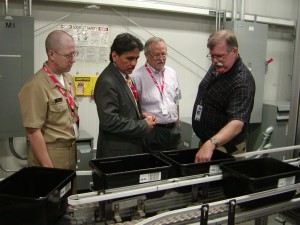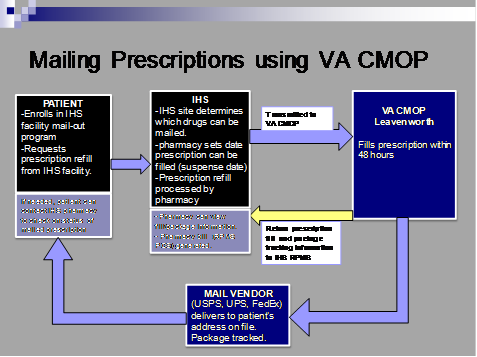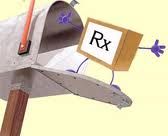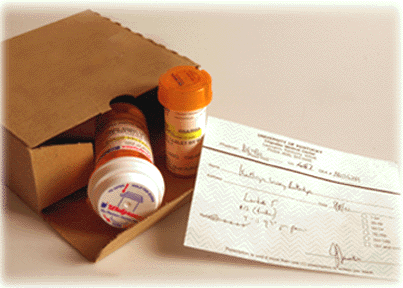3 Simple Ways to Combat the Long Pharmacy Wait Times
 What do you do in your pharmacy to keep the wait time down?
What do you do in your pharmacy to keep the wait time down?
While working at different IHS pharmacies, I’ve noticed a range of wait times and patience levels of patients.
I’ve worked at IHS/tribal pharmacies where the provider would instruct the patient to go to the pharmacy and their medications would be ready. Then the patient shows up and is disappointed that the wait time quoted by pharmacy staff is significantly longer. I’ve also worked at sites where patients have a lot of patience –they’re used to waiting a long time for their prescriptions. The pharmacists do their best to fill the prescriptions as soon as possible, and patients seem very understanding.
What can you do when you can’t help the long wait time because of staffing constraints? Increase patient satisfaction in one of these 3 simple ways:
 1. One way is give assurance that the pharmacy is working on their Rxs as quickly as possible. Instead of just having your staff tell people that the wait can be 1 hr long, for example, let them know “we are working on your prescriptions as quickly as we can. Although there is a bit of a line right now, when we receive it, we’ll start working on it right away.”
1. One way is give assurance that the pharmacy is working on their Rxs as quickly as possible. Instead of just having your staff tell people that the wait can be 1 hr long, for example, let them know “we are working on your prescriptions as quickly as we can. Although there is a bit of a line right now, when we receive it, we’ll start working on it right away.”
2. Something else your staff can do is let people know how the process works & invite them to come back later. For example, “the way it works is that the Dr. enters the prescription in after seeing you, then as soon as pharmacy receives the Rx, we process it. It may take 15 min after your visit before we receive the prescription to start working on it. Feel free to eat lunch & come back to pick up your Rxs.”
3.  A 3rd way to improve patient satisfaction is to help patients understand why it takes time to fill their prescriptions appropriately. It’s amazing how much we take for granted that we think people know what pharmacists do. Just try asking your next few patients whether they know what pharmacy does, and chances are that they will tell you we count pills.
A 3rd way to improve patient satisfaction is to help patients understand why it takes time to fill their prescriptions appropriately. It’s amazing how much we take for granted that we think people know what pharmacists do. Just try asking your next few patients whether they know what pharmacy does, and chances are that they will tell you we count pills.
One thing you can do is hand out a sheet of paper answering FAQs about the pharmacy & expectations while patients are either waiting to see their physicians or waiting to receive their prescriptions.
 What is one thing you will start implementing to improve patient satisfaction and decrease wait time for patients? Comment below and commit to the postive change.
What is one thing you will start implementing to improve patient satisfaction and decrease wait time for patients? Comment below and commit to the postive change.
Will My IHS Pharmacy Have to offer mail-order services?
Last month you read about how using the VA Consolidated Mail Outpatient Pharmacy (CMOP) for mail-order prescription services in IHS may affect pharmacy staff size. From what we learned during our interview with CAPT Pam Schweitzer, IHS-VA National CMOP Coordinator, the plan is for most sites to stay at the same staff size or to even increase. We asked you what you thought in our poll, and 70% thought that it wouldn’t increase.

Phoenix Indian Medical Center staff visiting the VA CMOP Leavenworth
Another frequently asked question about the program is “Will my pharmacy HAVE to offer mail-order services & use CMOP?” We discussed this with CAPT Schweitzer, and she took the time to address some of thse important and valid concerns:
Q: Will IHS require every site to get on board with CMOP?

 Q: Will the tribes have an opportunity to get on board with CMOP?
Q: Will the tribes have an opportunity to get on board with CMOP?

Ken Siehr, National CMOP Director snapped this photo of the staff when he stopped by Phoenix Indian Medical Center
Q: Which IHS sites are already implementing CMOP services?
IHS Pharmacy Directors: Pharmacy staff to decrease with CMOP implementation?
 I promised you an update on concerns about IHS pharmacies starting to offer central fill mail-order prescription refills through the Veteran’s Affairs Consolidated Mail Outpatient Pharmacy (CMOP) in Leavenworth, KS.
I promised you an update on concerns about IHS pharmacies starting to offer central fill mail-order prescription refills through the Veteran’s Affairs Consolidated Mail Outpatient Pharmacy (CMOP) in Leavenworth, KS.
Some concerns I heard from IHS/tribal pharmacy directors were: How would mailing prescriptions impact the current pharmacy staff? Will mailing prescriptions really be in the interest of patient care, and will every site be required to provide mail service? What about tribal pharmacies-can they get involved? Click here to find out the answers
I spoke to CAPT Pam Schweitzer, IHS-VA National CMOP Coordinator, to ask her these and other common questions about IHS mailing prescriptions and using the VA CMOP.
Read on to find out answers to some FAQs about the program and how the goals above will be met:
 Q: Is pharmacy staff expected to increase, decrease, or stay the same?
Q: Is pharmacy staff expected to increase, decrease, or stay the same?
A: The IHS sites where CMOP has been implemented so far have kept their pharmacy staff, and in some cases have increased pharmacy staff. These sites are fortunate to have good CEO support of the pharmacy department. The pharmacists will be able to spend more time reviewing a patient’s records when processing refills, performing medication reconciliation, and/or fulfilling Improving Patient Care (IPC) objectives that allow pharmacists more time to do clinical work.
Q. Wouldn’t mail-order services be worse off for patient care because the patients don’t get as frequent personal interaction, and our work may become less clinical?
A: Mailing prescriptions can increase patient compliance, especially for patients who live in remote areas and may have transportation barriers that prevent access to the pharmacy. Studies have shown that mailing prescriptions can increase patient adherence. Yet if a patient chooses to go to your pharmacy to pick up medications instead, he/she can still choose to do so. The pharmacists’ time will likely be freed up to provide more clinical services for patients, because pharmacists won’t need to be involved with filling nor verifying the prescriptions.
Q: What are the less known features of VA CMOP that will be beneficial to patient care?
A:  Patients can be provided with a 30-day supply of medications at each fill, increasing the possibility for billing and reimbursement for drug costs (especially if a site is currently dispensing 90 day supplies).
Patients can be provided with a 30-day supply of medications at each fill, increasing the possibility for billing and reimbursement for drug costs (especially if a site is currently dispensing 90 day supplies).
Patients are able to request their medication early (before the next fill is due) using a new feature in RPMS called Suspense.
Example: patient picked up medication today. He/she can request refill right now for their next fill.
Q: How will staff pharmacists’ & pharmacy technicians’ roles change due to CMOP implementation?
Staff pharmacists will still be involved with processing the refill prescriptions and will likely have more time to review the patient’s electronic record and manage medication therapy.
The pharmacy technicians’ workload of filling prescriptions will decrease, allowing more time for monitoring point-of-sale billing and inventory management. One additional duty the technicians have with CMOP is answering the phone and looking up tracking information if the patient didn’t receive their medication.
Stay tuned in a future issue to find out the rest of the answers to FAQs like whether every site will be required to use VA CMOP and what may be in store for tribal facilities. You’ll also see how CMOP would work if integrated with your pharmacy services.
Expecting pharmacy staffing needs in your IHS/tribal pharmacy? Not looking for just a warm body? Get options – select IHS-experienced pharmacists for your pharmacy